How to Prepare Your Homestead for Winter (Real-Life Checklist from Maine)
Get your homestead winter-ready with this fall checklist. Learn how to protect your garden, care for livestock, and prep your home for cold weather.
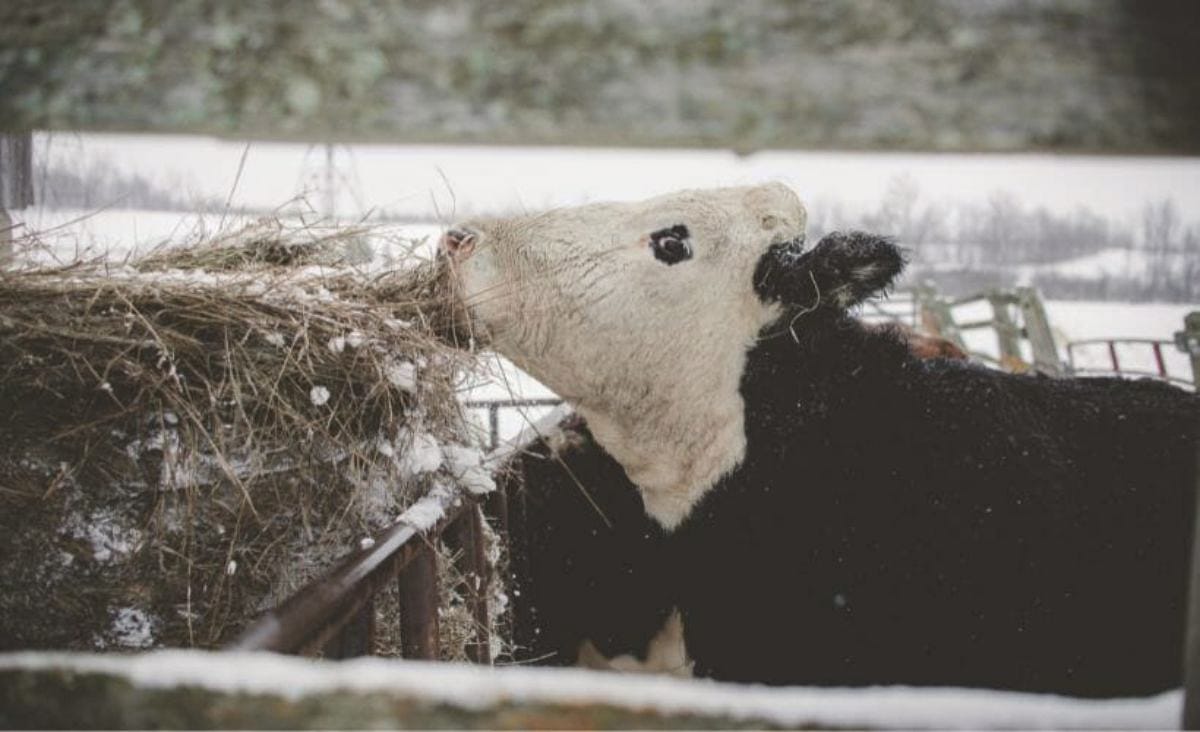
Every year around this time, I feel that familiar mix of urgency and satisfaction. The air gets crisp, the harvest bins start to empty, and I can almost smell the wood smoke drifting from the first lit stoves. It’s a comforting reminder (and a gentle nudge) that it’s time to button things up for winter.
Whether you’re brand new to homesteading or just trying to get ahead this fall, here’s what I focus on first before the ground freezes solid. From garden cleanup to tightening up the house before the snow flies and getting the animals squared away, I’ll share everything I do on my own Maine homestead to get ready for the cold months ahead.
Get the Garden Cleaned Up and Tucked In
Once the first frost threatens, I start outside. The goal is simple: tidy things up now so spring doesn’t catch you off guard later.
Start with Plant Cleanup
Pull dead annuals, weeds, and spent crops so you’re not giving pests and disease a winter home. I cut back most perennials to a few inches above the soil, leaving some seed heads for the birds.
Feed the Soil
Spread a thick layer of compost or well-rotted manure, then top it with leaves or straw. It locks in nutrients and keeps the soil from washing out. A few minutes now means less work come spring. If you’re following a no-till or Back to Eden method, just top it off with fresh mulch and move on.
If you’re not sure what to add to your soil this time of year, check out how to prepare your garden for winter. I walk you through mulching, compost, and easy soil care.
Handle Leaves Wisely
Don’t bag them. Rake them into a pile for leaf mold or use them as winter mulch. Those leaves break down into that crumbly, dark stuff your beds love. Here’s exactly how I make leaf mold. It’s one of my favorite lazy-season garden projects.
Final Tasks
Drain and store hoses, empty pots so they don’t crack, and sharpen or oil your garden tools before you hang them up for the season. I keep a small notebook in the shed and jot down what worked (and what didn’t) while it’s fresh.
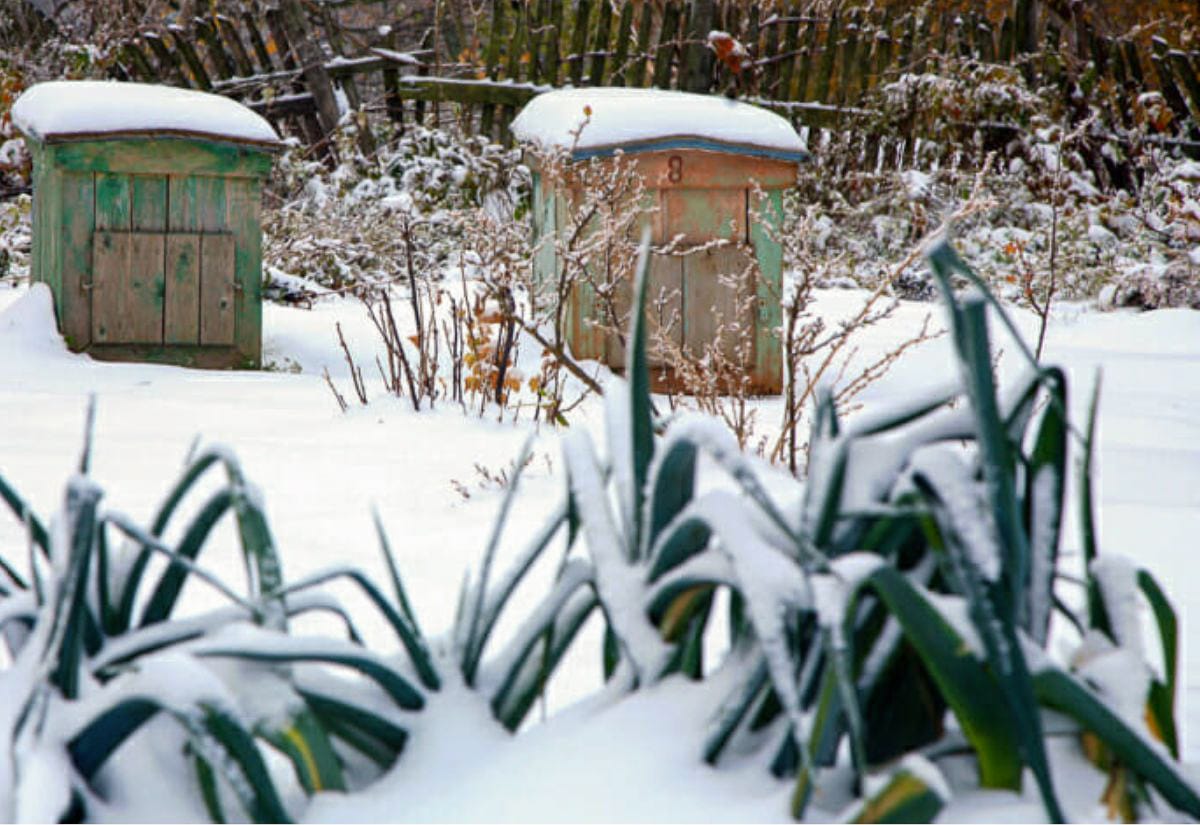
Winterize Animal Shelters and Coops
Livestock prep is the big job, but it pays off the minute the snow starts flying.
Stock Up Early
Feed prices often spike once cold weather hits, so I buy in bulk before November. The same goes for bedding, light timers, and basic first aid supplies. I keep a full checklist for the chicken coop and barn for winter that covers repairs, bedding, and predator-proofing, so nothing slips through the cracks.
Inspect and Repair
I walk through every shelter, barn, and coop with a flashlight in hand, checking for drafts, loose boards, or anything that’ll bite me later. Wrap or insulate exposed pipes so you’re not dealing with a burst line mid-January. A roll of self-sealing pipe insulation costs just a few dollars and takes minutes to install. Get it done before that first hard freeze hits.
No Heaters Required
I don’t recommend using supplemental heat at all. They are a serious fire risk. Healthy animals handle cold better than humidity or drafts. Deep bedding, decent airflow, and a solid windbreak do more for comfort than a heat lamp. If you need ideas for creating shelter from harsh winds, try some of the DIY solutions I’ve shared in how to make windbreaks for your homestead.
Lighting Matters
If you want to maintain egg production, you can use a simple timer and a low-watt bulb to bring total daylight to around 14 hours. It’s not something you have to do. Some people prefer to let their hens take a natural break. But adding a little extra light won’t hurt them or “burn them out,” despite what you might read online. If you do keep them laying through winter, collect eggs early so they don’t freeze solid before you get to them.
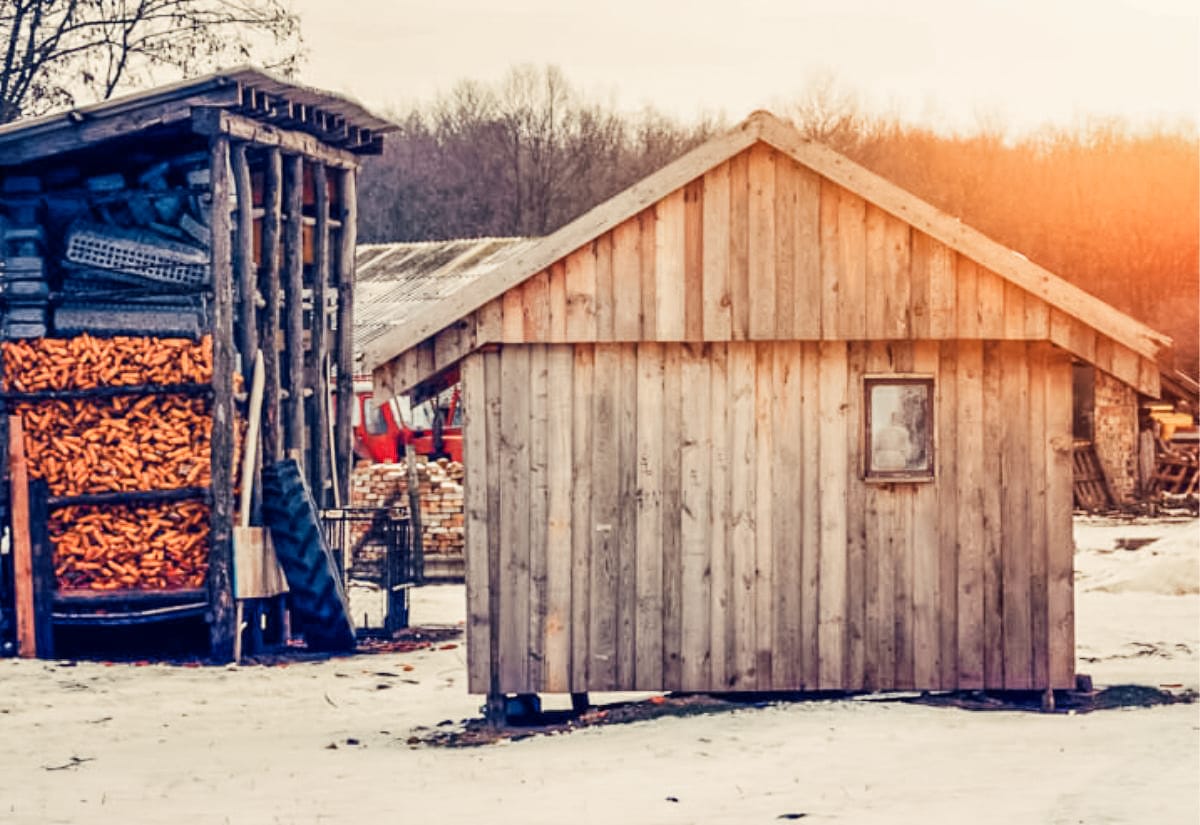
Button Up the House
Forget “spring cleaning.” Fall is when I do the real cleaning.
Before settling in for winter, I do a deep clean and declutter. Anything broken, unused, or just taking up space gets tossed or donated. A tidy home just feels better when you’re cooped up with it for months.
Next, I do a home energy check. Replace worn weather stripping, add foam gaskets behind outlet covers, and check attic insulation. Hang thermal curtains or tape up window film to stop heat loss. Pipe insulation is cheap and saves you a mess later.
If you heat with wood or pellets, stockpile more than you think you’ll need. I always underestimate Maine winters. For fireplaces, have the chimney cleaned and inspected before the first fire of the season. We use moisture meters with our firewood to make sure each log burns efficiently and safely.
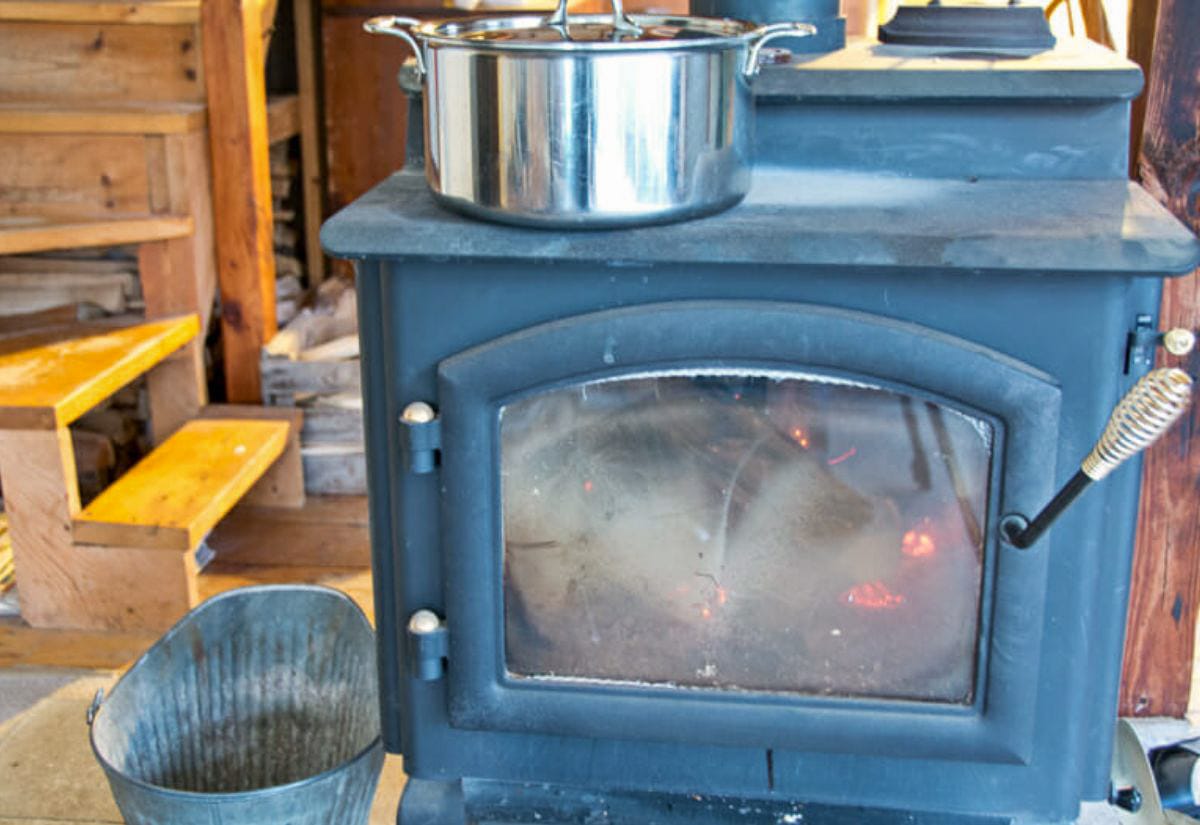
Finally, make sure you have working carbon monoxide and smoke detectors on every level. It’s one of those things that saves lives.
Stock Up on Supplies Before the Snow Flies
This is where I channel my inner squirrel. Some things are just easier (and cheaper) to gather now:
- Feed, salt blocks, and extra bedding
- Batteries, lanterns, and candles
- Canned goods and pantry staples
- First aid and cold-weather medicines
- Ice melt, sand, and snow shovels
I also keep the generator tuned up and stored with a full gas can, because a Nor’easter isn’t when you want to learn it won’t start. I went years without one. Now that I have it, I won’t go back.
I keep a small tote of herbal salves, splints, and the kind of stuff I always seem to need at 10 p.m. when everything’s closed. Here’s what I keep in my homestead first aid kit if you’re building your own.
Fall is also when I batch-cook and freeze a few hearty meals. If you want ideas that hold up beautifully in the freezer, try these homemade soups for winter. They’ve bailed me out more than once on snowed-in nights.
If you’re rural, add in a winter emergency plan: backup heating fuel, a vehicle kit with blankets and food, and copies of important documents. It sounds extra, until you’re snowed in for three days.
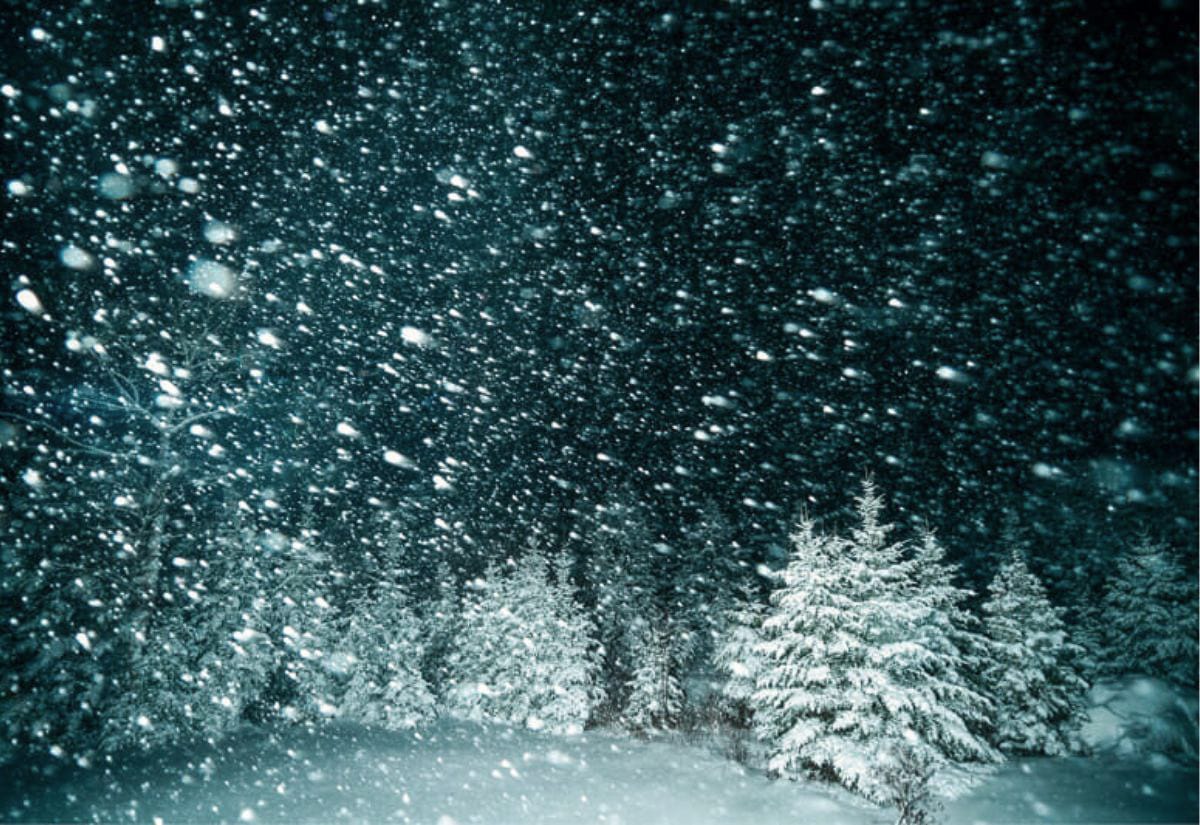
The Final Fall Touches
Before I call it done, I take one last slow walk around the property. It’s my end-of-season ritual. I check for loose tarps, low branches that might snap under ice, and anything else that could turn into a mid-storm problem.
Then I make a big mug of apple cider, light a fire, and actually enjoy the season for a minute. Honestly, homesteading isn’t just about getting by. It’s about finding comfort right where you are, even when the snow piles up.
Questions About Prepping Your Homestead for Winter?
Here are a few things people often ask after reading this guide.
Pin this guide to come back to when you’re getting your own homestead ready for the season.
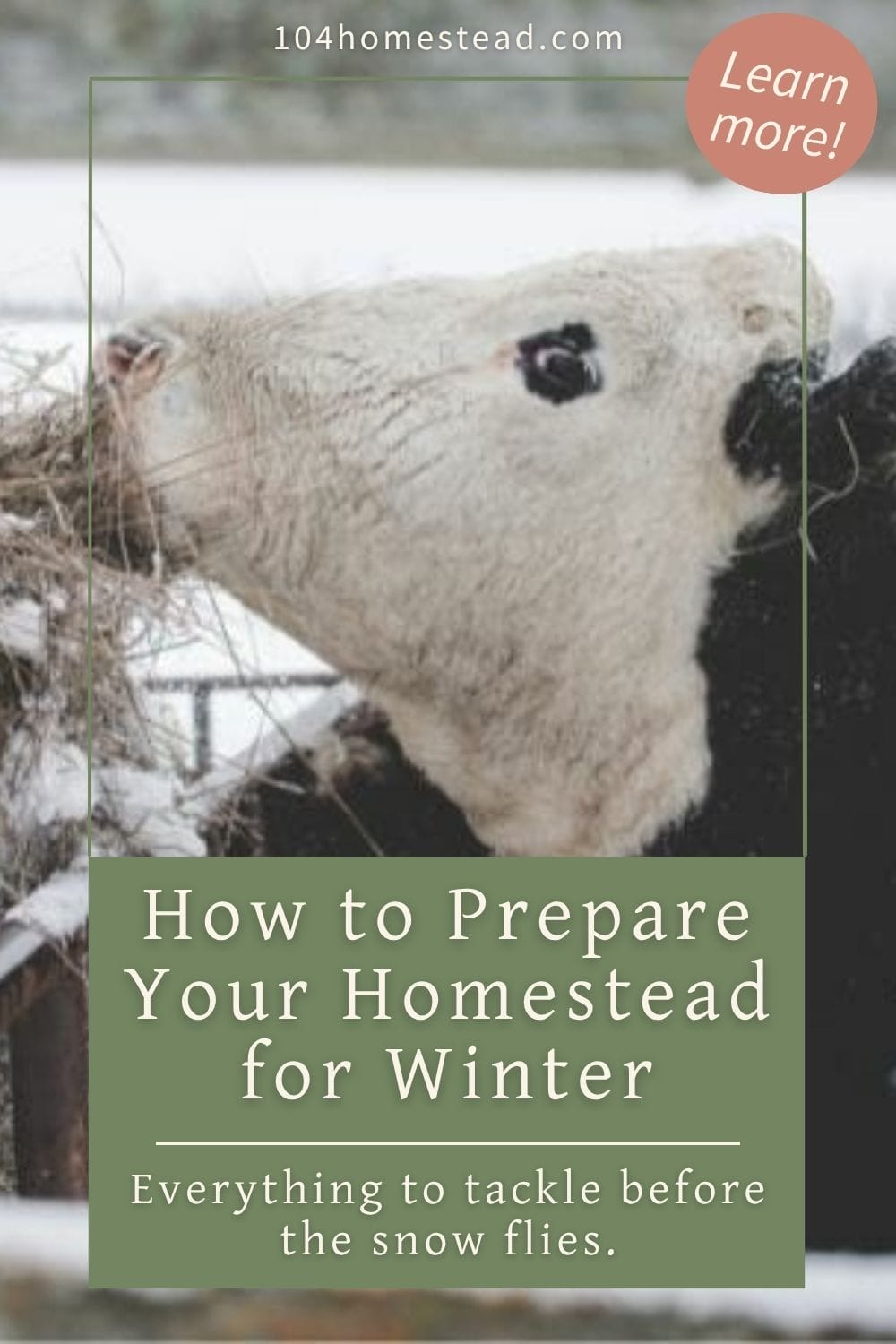
Once the last chores are done, everything on the homestead gets quiet in the best way. The tools are hung, the animals are settled, and the garden sleeps under its blanket of mulch.
Winter’s when I finally slow down. I plan next year’s projects, flip through seed catalogs, drink too much coffee, and remind myself that the rhythm of busy, then rest, is what keeps this sustainable.
Happy winter prep, friends.

You made a good point that snow removal tools should be prepared when anticipating a harsh winter. This year is my first year living in a state that experience a whole lot more snow that where I’m from. Perhaps hiring a snow removal service would come in handy if it a blizzard hits later this year.
You explained it really well. Can you suggest some outdoor activities one can do in winters?